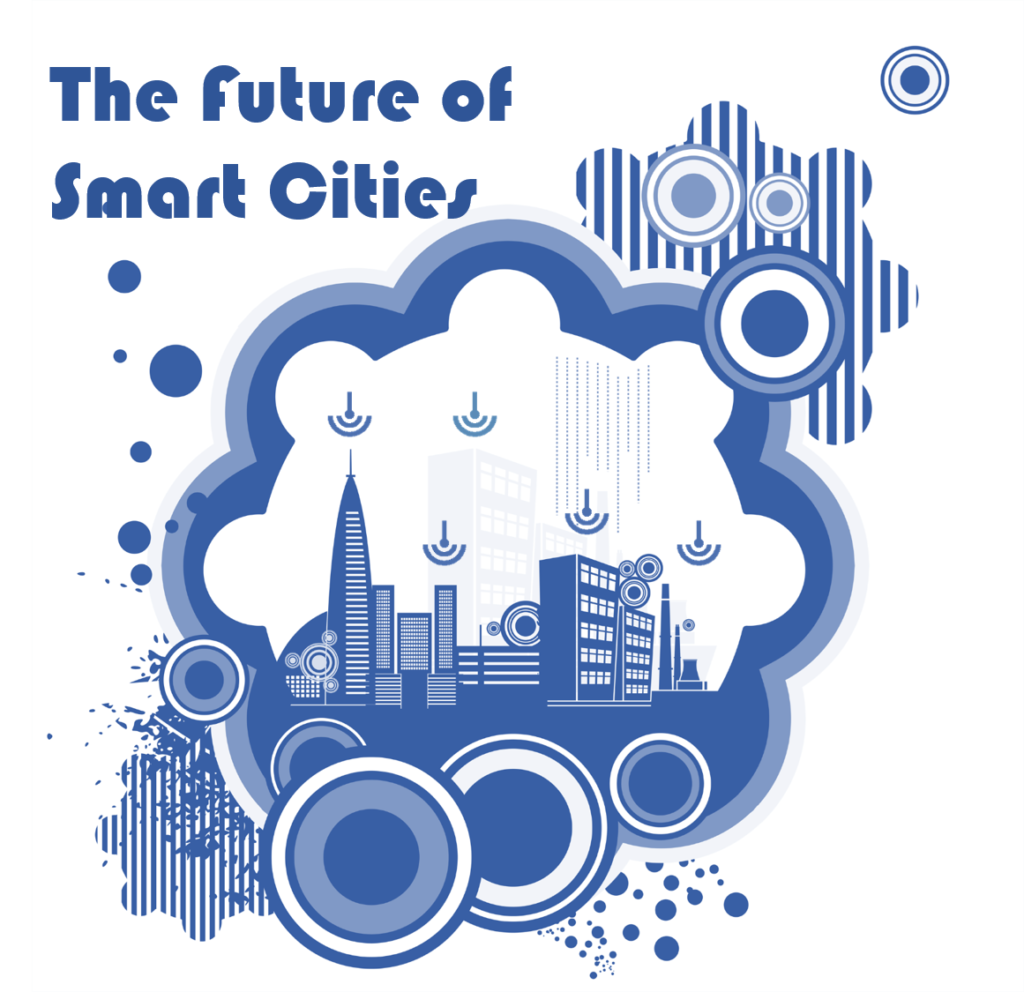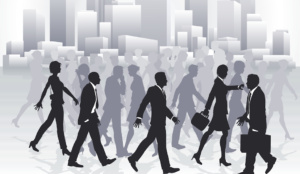Most people recognize that humanity has been too wasteful when it comes to natural resources and too cavalier when it comes to protecting the planet. We are now beginning to pay a price for our excesses. As more of us concentrate in urban environs, modern technologies offer us a way to use resources more wisely and protect the planet at the same time. Nevertheless, for a number of reasons, smart city initiatives seem to have stalled in many places around the globe. Half-a-decade ago, journalist Nick Ismail (@ishers123) discussed the need for (and optimism surrounding) the smart city movement. He wrote, “In 1900, only 14% percent of the world’s population lived in urban areas. Today, for the first time in history, more than half the planet’s population resides in cities, which are fast becoming innovation hubs and are developing quickly into smart cities. The number of smart cities around the world is expected to grow exponentially over the next few years and by 2050, 70 per cent of the world’s population will be living in smart cities.”[1] What happened to that enthusiasm?
Concerns About Smart City Technologies
The most obvious answer as to why smart city enthusiasm has dampened is concern about privacy. Opponents to the smart city movement have raised the specter of George Orwell’s “Big Brother” and they warn about the rise of surveillance societies. These are not crazy, QAnon-like conspiracy theorists; rather, they are individuals with genuine concerns. After all, smart cities rely on connectivity and data. Ismail explains, “Smart cities use Internet of Things (IoT) devices and sensors to gather and analyze information across infrastructure. This helps city authorities to intelligently manage their assets, increase efficiencies, revolutionize transport, reduce costs, and in theory, enhance overall quality of life for residents.” James Bambrough (@jgbambrough), head of concepts and services at QinetiQ, explains many of the concerns involve predictive policing and the use of facial recognition. He writes, “PredPol is an American predictive analytics program, used by dozens of police departments. It forecasts criminal activity by examining enormous volumes of past data, claiming to be able to predict who will commit crimes, and where.”[2] As you might imagine, such a system has raised numerous concerns about reliability and prejudice. Bambrough continues, “The second technology, AI surveillance, has a broader definition — drawing on everything from facial recognition systems and social media monitoring to license plate tracking, along with body language analysis. Champions highlight the ability to help emergency services and law enforcement better deal with crimes and accidents. But biases implicit to AI systems have caused concern, along with a culture of ubiquitous surveillance that could be ushered in.”
Another genuine concern being raised is cybersecurity. Bambrough explains, “In December 2016, renowned cybersecurity expert Mikko Hypponen tweeted ‘Hypponen’s Law’ — ‘If it’s smart, it’s vulnerable.’ This simple premise has proven itself repeatedly over the ensuing years. Numerous smart city products are left exposed to the open internet. Leaving public safety sensors or industrial control systems vulnerable creates unpleasant possibilities — tampering with traffic lights, silencing disaster warnings, or interfering with radiation readings are a few examples.” These challenges and concerns are very real; however, the need for smart city technologies is also very real. As a result, Bambrough notes, “Our new, smart urban spaces have the potential to be one of the sharpest double-edged swords of the next decade.”
The Smart City Imperative
According to Soren Kaplan (@sorenkaplan), founder of Praxie, “Smart Cities are fully connected, sustainable, energy efficient, and socially friendly communities that use their infrastructure to intelligently improve the quality of life of those who live and visit there.”[3] As the above discussion emphasizes, that ideal view of a smart city has a few flaws that require addressing. Even so, Kaplan discusses how using resources wisely and improving the quality of life for urban residents are important. The question is how to achieve those goals without jeopardizing other important aspects of urban living. As Kaplan notes, “While technology enables much of what makes a city ‘smart’ — like sensors, data analytics, etc. — the future really isn’t about technology as an end itself, but rather serving the needs of the various stakeholders that comprise a community. Using technology to solve social problems while improving quality of life is truly the definition of ‘smart’.”
Mark Jen (@markjen), CTO and Co-founder at Common Networks, writes, “The core idea around smart cities is to use technology to improve efficiency. That means taking all of the technology advances that have been applied towards things like video streaming, photo sharing, and advertising and bringing them to bear on things like city planning, public health and safety, education, and transportation.”[4] He goes on to note, “We have all the pieces we need to make this happen today: cheap and powerful processors, wireless or wired communication, sensors, and cloud processing power. The issue is figuring out how to deploy all these systems in a cost effective way.” As noted above, cost efficient implementation isn’t the only concern. Nevertheless, efficiency is part of the smart city imperative.
It’s ironic that the smart city movement seems to have slowed at a time when it should have logically accelerated. Ugo Valenti (@uvalenti), Director of the Smart City Expo World Congress, explains, “The pandemic has surely shifted the urgency of some improvements and the quick deployment of certain technologies. In the next few years, we will see a rise in the use of contactless public services, artificial intelligence (AI) bursting deep into the fabric of our cities, and even traffic congestion curbed by new teleworking schemes.”[5] Journalist Camille Squires (@CamilleSquires) believes the future smart city will have “more sensors, more automation, and hopefully more privacy.”[6] To achieve that aim, she believes four things will play a big role. They are:
1: A better kind of building. One cannot reasonably separate people from the buildings in which they live and work. Making those buildings smarter and more efficient is essential. Squires explains, “Urban built environments cover only 3% of the earth’s surface, but make up nearly 40% of global greenhouse gas emissions. In the future, they’ll need to be much more sustainable while also becoming more affordable and multipurpose than they are today. … Creating such complex, dynamic buildings will require a complete rethinking of the building process in cities, from design, to construction.”
2: Sensors on everything, not everyone. As I noted above, you can’t have a smart city without connectivity and data. Squires writes, “At the heart of the idea of a smart city is a network of interconnected sensors, cameras, and devices that are constantly collecting and analyzing data about a number of metrics — an internet of things, if you will. IoT technology has been used in cities for years, but people began to question what data was being collected, and to what ends. … Now there’s a shift underway among urban planning scholars to encourage cities to shift away from monitoring people to monitoring systems. Cities have started to use sensors and robotics to measure and control things like air quality, wastewater, flooding, and street lights. Going forward, sensors will have an even greater role to play in monitoring the built environment. Cities will increasingly use computer vision and AI to evaluate the condition of roads, bridges, and sewers in order to make repairs more quickly. Sensors will be used in managing waste, monitoring noise pollution, and even preventing train collisions.”
3: Automation and the supply chain. A lot has been written about how people will move in, out, and around smart cities. Less attention has been paid to how goods will move in, out, and around smart cities. Automation is likely to play a huge role in moving goods reliably and safely. As Squires notes, “The biggest change in city transit will center on the movement of goods, not people. If the boom in e-commerce continues, as retail industry analysts expect it to, cities and companies will need to devise new solutions for warehousing, fulfillment, and delivery in urban spaces. Cities will need to embrace last-mile delivery vehicles that don’t burn fossil fuels, such as drones and e-cargo bikes.” Anthony Townsend, an urban planner, told Squires, “Automation is easier to do when people aren’t involved. You don’t have to keep passengers safe, you can operate at much slower speeds, and you can operate on a smaller part of the road network.”
4: Smart cities and digital twins. Smart cities will only be truly smart when all systems work together holistically. This is sometimes referred to as a system-of-systems approach. IBM believes “people” are one of six core systems smart cities must optimize and integrate. The other five systems are: business; transport; communication; water; and energy. I would add a seventh system — waste management (which includes both trash and sanitation). Squires reports that Seoul, South Korea, is developing a metaverse to help run its systems. A much more practical way is to model city systems is to utilize digital twin technology. Squires explains, “It’s software that creates a digital replica of an entire city’s geography, including buildings, roads, and subterranean infrastructure like sewers and subways, recreated accurately down to the smallest detail, and updated with changes in real time. Even if it’s something the typical city resident never sees, digital twins can be invaluable to urban planners because they allow cities to model out infrastructure projects, building construction, and other changes to the built environment and evaluate their impacts in the real world, all before ever breaking ground. It’s going to change the way cities build.” Digital twin technology will also revolutionize how smart cities are maintained.
Concluding Thoughts
We need to recapture public enthusiasm for smart cities. As Ismail explained, “Humanity has come a long way since the very first cities began to emerge more than ten thousand years ago. The possibilities for what can be achieved are endless, and the smart city is one exciting area where things will really start to take shape.” Valenti adds, “Cities are not only the stage where our lives play out, they are also an expression of their citizens, who they are, and who they want to be. By deploying certain services and solutions we are paving the way for a better tomorrow, drawing the blueprint to the future.”
Footnotes
[1] Nicholas Ismail, “What will the smart city of the future look like?” Information Age, 21 September 2017.
[2] James Bambrough, “The perils of the smart city,” Computing, 19 January 2021.
[3] Soren Kaplan, “The Future of Smart Cities,” Inc., 16 May 2019.
[4] Mark Jen, “What Will It Take To Build Smart Cities?” Forbes, 4 September 2019.
[5] Ugo Valenti, “A blueprint for the future: We are the cities we make,” Cities Today, 21 October 2021.
[6] Camille Squires, “What’s next for smart cities,” Quartz, 15 May 2022.





